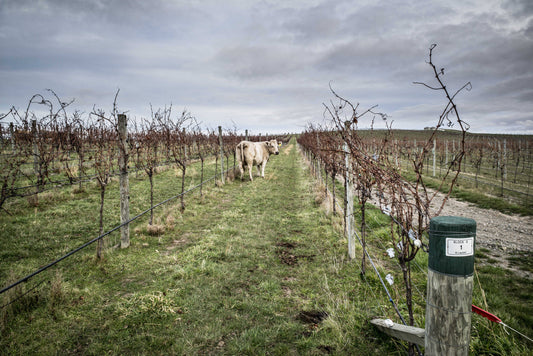| When vineyards first became part of the rural landscape of the British Isles is not known. It is often claimed that the Romans planted vineyards, but real evidence is hard to find. In all probability vines were planted but whether they were successful is another matter. No winemaking equipment, such as the stone treading and pressing troughs found in the other parts of their empire, has ever been found. In addition, no falx vinitoria, the pruning knife used in vineyards by the Romans and found all over Europe, has ever been found in Britain.
In the subsequent centuries since the Romans colonized Britain, vineyards have made an occasional appearance in our history. The invading Normans certainly planted them and the Domesday Books of 1086 and 1087 record 45, some attached to monasteries, others owned by the King and his nobles. In the Middle Ages, vineyards were cultivated by the clergy in a variety of places and the Archbishop of Canterbury was a noted vineyard owner. Following Henry VIII’s split with Rome in 1534 and his re-distribution of monastic lands, many vineyards disappeared and they became a rare and unusual sight in the British countryside.
Notable vineyards, notable because they were there, not because their wine was necessarily highly prized, included one owned by the King at St James’s Palace; one at Hatfield House which the famous diarist Samuel Pepys commented on in his diaries; and the well-recorded and documented one at Painshill Place which was in production from 1740 until at least 1775. The final ‘historic’ vineyard worthy of mention is that of the Marquess of Bute at Castle Coch which thrived from 1875 until the last successful vintage in 1911. The vineyards covered over 13 acres at their peak and were sold under the Canary brand by Hatch Mansfield & Co.
The genesis of the modern era of vineyards can be laid at the door of an intriguing individual with a scientific bent who, in the latter part of World War II, moved to Oxted in Surrey where he established a fruit and vegetable garden. Not content with just potatoes and rhubarb (and the other usual fruits and vegetables), he decided to try growing firstly peaches, which the gardening books of the day said were impossible to ripen outdoors, and secondly grapes, which were labelled with the same caveat. Undeterred, and spurred on by not only table grapes but also wine grapes, Raymond Barrington Brock (Ray Brock) persevered, collecting over 600 vine cultivars from home and abroad, trialling them in as scientific a way as he could and writing up the results in a series of small handbooks, the first of which, Outdoor Grapes in Cool Climates (price 6/-), was published by Brock in 1949. His enterprise became known as the ‘Oxted Viticultural Research Station’ and its existence helped promote the idea of grape-growing as a profitable enterprise. Three years later, in March 1952, the first true commercial vineyard of the modern era was planted by Major General Sir Guy Salisbury-Jones in Hambledon, Hampshire. | 


